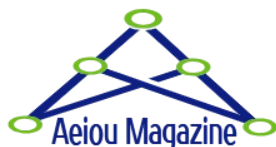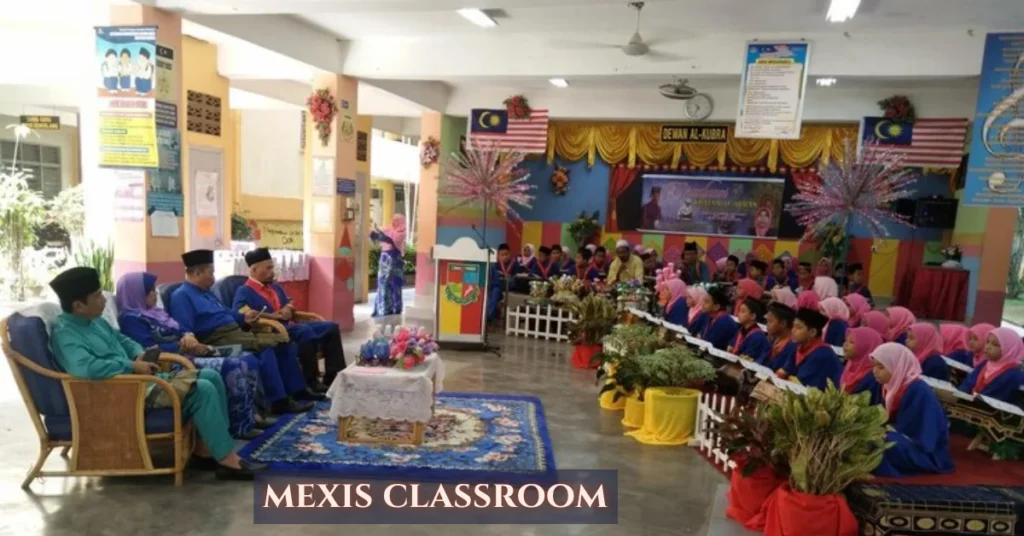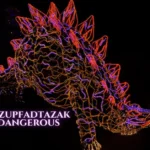Learning has always been an evolving journey, and today, education is far more than pages in a textbook. The mexis classroom concept represents an educational revolution where learning leaps from the traditional lecture hall into real-life experiences, opening up a world of culture, history, and personal growth. In this article, we delve into how this innovative approach transforms education and empowers students to explore the world beyond the confines of conventional classrooms.
Introduction
Imagine a classroom without walls, where every experience is a lesson and every journey turns into a chapter of personal discovery. That is the essence of the mexis classroom. By blending traditional academic pursuits with practical, immersive experiences, this model of learning redefines what it means to be educated in our ever-changing, globally-connected world.
Have you ever thought about learning history by actually standing on ancient ruins, or understanding cultural differences by living among the people who shaped them? That’s the magic behind the mexis classroom, where education meets real life in ways that textbooks simply cannot replicate.
Background of Mexis Classroom
The Concept and Vision
The mexis classroom is born from the need to bridge the gap between theoretical learning and practical, real-world application. It stems from the idea that truly impactful education happens when students are able to interact directly with the subject matter. By stepping out of the classroom and into communities, historical sites, and cultural hubs, learners gain not only knowledge but also empathy, critical thinking skills, and a broader perspective on the world around them.
From Traditional Learning to Experiential Education
Traditional education often relies heavily on memorization and textbook learning. While these methods have their place, they may limit a student’s ability to apply learned concepts to real-life scenarios. Experiential education—embodied by the mexis classroom—addresses this challenge by actively engaging students in the learning process. Through immersive experiences and interactive lessons, learners can connect academic theory with tangible experiences, making education a lived reality rather than a distant abstraction.
Curriculum and Approach
Course Structure and Flexibility
One of the defining features of the mexis classroom is its flexible curriculum. Unlike rigid academic schedules, this approach allows students to choose topics that spark their interest while ensuring they cover essential academic concepts. Courses are designed to be dynamic and adaptable, encouraging learners to explore subjects from multiple angles. Whether it’s studying ancient civilizations or analyzing modern cultural trends, the curriculum is tailored to nurture both curiosity and academic rigor.
Students often have the freedom to design projects that align with their interests. This personalized learning journey ensures that no two experiences are the same, and that every student can feel a personal connection to the material. The ability to choose and adapt lessons enhances motivation, making the educational process both engaging and deeply personal.
Focus on Culture and History
At the core of the mexis classroom lies a deep appreciation for cultural diversity and historical context. Courses are structured around understanding how historical events, cultural practices, and societal norms shape the present. By investigating these elements in the field, students can appreciate the nuances that a classroom setting may not fully capture.
For instance, consider the study of Latin American history. Instead of relying solely on chapters in a history book, students might visit ancient ruins, interact with local historians, and participate in cultural festivals. This immersive approach brings history to life, transforming dry dates and events into vivid, relatable experiences that resonate on a personal level.
Experiential Learning in Action
Learning Beyond Books
The true hallmark of the mexis classroom is its commitment to learning that transcends textbook content. Here, education isn’t confined to theoretical lectures; it becomes a journey of discovery. Students are encouraged to step beyond the traditional classroom environment to fully engage with their subject matter. Imagine learning about the Mexican Revolution not from a textbook alone, but by walking the same streets where historical battles were fought and by visiting homes where pivotal moments took place.
This approach not only helps in memorizing facts but also fosters a deeper understanding of cultural, societal, and historical contexts. It transforms learning into an active, dynamic process where every lesson learned outside the classroom contributes to a broader, richer educational experience.
Immersive Cultural Experiences
Experiential learning in the mexis classroom involves a range of activities designed to immerse students in cultural and historical environments. Let’s take a closer look at two key aspects:
Study Abroad Programs and Field Trips
One of the most exciting features of the mexis classroom is its emphasis on study abroad programs and field trips. These opportunities allow students to travel to locations that are central to their studies. Whether it’s exploring ancient ruins, wandering through vibrant local markets, or participating in traditional festivals, students find themselves at the heart of learning.
For example, a trip to historical sites in Mexico can transform abstract concepts into concrete realities. By physically experiencing the environment where historical events unfolded, students gain insights that a classroom discussion could never provide. Field trips become extended lessons—each step on ancient cobblestones or every conversation with local experts adds a new layer to the learning process.
Interaction with Local Experts
Another integral component of the mexis classroom approach is the interaction with local experts and community leaders. These interactions offer students firsthand accounts of traditions, historical narratives, and cultural practices. Engaging with someone who has grown up with a particular tradition or who has witnessed significant historical changes can provide unique perspectives that enrich classroom discussions.
By allowing students to ask questions and gain nuanced insights directly from experts, the mexis classroom ensures that learning is not a one-way street. Instead, it becomes an interactive dialogue between the past and present, nurturing a sense of wonder and understanding that encourages lifelong learning.
Impact on Students
Personal Growth and Global Perspective
The mexis classroom model has a profound impact on students, fostering personal growth and a global mindset. When learners step into diverse environments, they are not only exposed to new cultures and histories—they are challenged to reassess their perspectives. The close interaction with people from different backgrounds cultivates empathy, cultural sensitivity, and an openness to diverse ideas.
Students emerge from these experiences more resilient, adaptable, and prepared to contribute meaningfully to an increasingly interconnected world. The lessons learned go far beyond the academic; they shape character, broaden horizons, and build bridges between different cultures and societies.
Success Stories from Mexis Classroom Alumni
Countless success stories have emerged from those who experienced the mexis classroom firsthand. Alumni speak passionately about how immersive learning experiences have opened doors to new career opportunities, enriched their personal lives, and expanded their understanding of the world.
For instance, many former students attribute their ability to navigate global challenges and thrive in multicultural environments directly to the hands-on learning opportunities they experienced. These stories serve as a testament to the lasting impact of the mexis classroom model—a model that not only educates but also inspires and empowers its participants.
Integration of Technology and Tradition
Digital Tools Enhancing the Experience
Even in an era where technology dominates many aspects of life, the mexis classroom successfully integrates digital tools with traditional learning methods. Digital platforms, virtual tours, and online collaboration tools enable students to extend their learning beyond physical boundaries. Whether through interactive maps, virtual museum tours, or digital storytelling, these resources complement in-person experiences by providing additional layers of context and interactivity.
Technology also facilitates global connections. Students can join online forums, participate in webinars with international experts, and collaborate on projects with peers around the world. This digital dimension enriches the mexis classroom experience, making it even more dynamic and accessible.
Traditional Methods that Withstand Time
Despite the rise of digital innovation, traditional methods of learning remain invaluable. The mexis classroom honors time-tested teaching methods—such as face-to-face discussions, hands-on projects, and real-world explorations—that continue to foster deep learning and personal connection. This blend of technology and tradition ensures that while students benefit from modern advancements, they also experience the enduring value of direct human interaction and tactile learning.
By harmonizing digital enhancements with traditional practices, the mexis classroom creates a balanced educational approach that honors the wisdom of the past while embracing the possibilities of the future.
Global Relevance of Experiential Education
Cultivating a Global Mindset
In today’s interconnected world, cultivating a global mindset is more critical than ever. The mexis classroom model plays a vital role in this regard by pushing students to think beyond their immediate surroundings. Through immersive experiences in different cultures, students learn to appreciate diversity, challenge preconceived notions, and develop a broader understanding of global issues.
This global perspective not only prepares students for careers in international fields but also shapes informed, compassionate citizens capable of bridging cultural divides and addressing global challenges with innovative solutions.
Challenges and Opportunities in a Digital Age
While the digital age offers incredible opportunities for experiential learning, it also presents challenges. Navigating the vast sea of information requires discernment, critical thinking, and a balanced approach to technology use. The mexis classroom tackles these challenges head-on by integrating technology in a way that amplifies the learning experience without overshadowing the importance of direct, sensory experiences.
Students learn how to harness digital tools effectively while developing the skills necessary to evaluate and contextualize digital information. This dual approach prepares them to thrive in a world where digital literacy and experiential knowledge go hand in hand.
Expanding the Mexis Classroom Concept
Partnerships and Collaborative Programs
A significant strength of the mexis classroom model is its ability to forge partnerships between academic institutions, cultural organizations, and local communities. These collaborative programs open up additional avenues for experiential learning by providing diverse opportunities for engagement and growth.
Universities and colleges are increasingly partnering with cultural institutions, tourism boards, and international organizations to create programs that immerse students in real-world experiences. Such partnerships amplify the reach and impact of the mexis classroom, making it a beacon of innovative education that transcends geographical and institutional boundaries.
Future Trends in Experiential Learning
As the educational landscape continues to evolve, so does the potential for the mexis classroom concept. Future trends point toward an even greater emphasis on personalized, experiential learning. With advancements in augmented and virtual reality, the possibilities for immersive educational experiences are expanding rapidly. Imagine virtual field trips that complement physical travel, or interactive simulations that bring historical events to life—all of which can be seamlessly integrated into the mexis classroom model.
Moreover, as global challenges become more complex, the need for adaptive and forward-thinking education grows. The mexis classroom is well-positioned to lead this transformation by continually refining its methods and embracing new technologies that enhance learning while remaining rooted in the rich traditions of experiential education.
Conclusion
The mexis classroom approach represents a bold reimagining of the learning process—one that places experience, culture, and personal engagement at its core. By merging academic rigour with immersive, real-world experiences, this innovative educational model not only enriches students’ knowledge but also shapes well-rounded, globally aware individuals ready to tackle the challenges of tomorrow.
From interactive field trips to collaborative digital platforms, the lessons learned in a mexis classroom go far beyond the books. They lay the foundation for a lifetime of curiosity, empathy, and critical thinking—values that are essential in an ever-changing world. As education continues to evolve, the mexis classroom stands as a testament to the power of learning that truly comes to life, reminding us that the best education is one that prepares us not just for exams, but for life.
FAQs
What defines the “mexis classroom” approach?
The mexis classroom approach is defined by its emphasis on experiential learning, combining traditional academic methods with immersive, real-world experiences that allow students to gain a deeper understanding of culture, history, and personal growth.
How does experiential learning enhance traditional education?
Experiential learning enables students to connect theoretical knowledge with real-life experiences, making learning more engaging and meaningful. It turns abstract concepts into tangible lessons through field trips, cultural immersion, and hands-on projects.
What are some success stories related to the mexis classroom?
Numerous alumni of the mexis classroom report transformative experiences that helped them secure global opportunities, develop strong cultural empathy, and apply their knowledge in real-world situations, ultimately shaping them into well-rounded professionals and citizens.
How is technology integrated into the mexis classroom?
Digital tools such as virtual tours, interactive maps, and online collaboration platforms are used to complement traditional learning. These technologies enhance access to information, bridge geographical gaps, and enrich the overall learning experience without detracting from hands-on engagement.
What future trends can we expect for experiential education in this model?
Future trends include the increased use of augmented and virtual reality to create even more immersive learning experiences, as well as the growth of collaborative global programs that further blur the lines between formal and informal education, ensuring that experiential learning remains dynamic and evolving.






